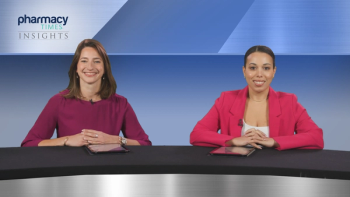
Emerging Data: Impacts of ROCKstar and AGAVE-201
Panelists discuss how factors such as patient preferences, disease severity, organ-specific involvement, and adverse effect profiles influence the selection of second-line therapies for steroid-refractory chronic graft-vs-host disease (cGVHD) in the context of multiple FDA-approved agents.
Episodes in this series

The 3-year final analysis of the ROCKstar study has had a significant impact on the utilization of belumosudil in treating difficult-to-manage manifestations of diseases, particularly fibrosis. This update has shown that the best overall response rate remains high at 74%, compared with 75% in the original trial, highlighting the treatment's continued effectiveness. Additionally, the time patients spend in treatment has increased from 16 months to 24 months, suggesting that the therapy provides long-lasting, durable responses. This extended duration is important for managing fibrotic conditions, as these can take months or even years to show visible improvements, making early intervention crucial for optimal outcomes.
A critical aspect of the study's findings is the growing body of data supporting the use of belumosudil earlier in the treatment process, even for patients with fibrosis or other fibrotic manifestations. Although officially approved only after 2 prior treatments, calcineurin inhibitors, commonly used in patients prior to treatment, can count as a treatment line, allowing for earlier access to belumosudil. The growing evidence suggests that initiating therapy sooner may offer better long-term results for patients struggling with lung or other organ fibrosis, which requires more time to respond to treatment.
In the AGAVE-201 trial, a novel therapy using a CSF1 receptor inhibitor showed promising results in treating chronic GVHD. The study revealed that the lowest dose of the drug (0.3 mg/kg every 2 weeks) unexpectedly had the highest overall response rate, even though it was not associated with fewer adverse events. The trial highlighted the drug’s effectiveness in treating fibrotic manifestations across various organs, with 74% of patients experiencing positive responses. This therapy, particularly at lower doses, was well tolerated, with common adverse effects including infections and mild liver enzyme increases. These findings suggest a promising new option for managing chronic GVHD, with ongoing research needed to refine treatment strategies.
Newsletter
Stay informed on drug updates, treatment guidelines, and pharmacy practice trends—subscribe to Pharmacy Times for weekly clinical insights.


















































































































































































































